In the world of construction and roofing, corrugated galvanized steel roofs have become a popular choice for many. Why? They offer a balance of durability, weather resistance, and affordability, making them an excellent option for both residential and commercial buildings. Whether you’re a contractor, a homeowner, or just a curious reader, this guide will walk you through everything you need to know about corrugated galvanized steel roofs.
From understanding how these roofs are made to choosing the right type of steel roof for your project, we’ll break down the technicalities in a way that’s easy to understand and engaging. So, let’s dive in!
What is Corrugated Galvanized Steel Roofing?
Corrugated galvanized steel roofs are made by pressing sheets of steel into a corrugated or wavy pattern and then coating them with a layer of zinc to protect against rust. This unique design increases the strength of the material, allowing it to withstand heavy loads and harsh weather conditions. Galvanization (the zinc coating) offers an additional layer of protection against corrosion, which is vital for outdoor applications like roofing.
These roofs are commonly used in warehouses, agricultural buildings, residential homes, and industrial structures, thanks to their durability and ability to last for decades. But that’s not all—these roofs are also lightweight, fire-resistant, and offer excellent energy efficiency.
Corrugated Iron Sheets Guide
When it comes to selecting corrugated iron sheets for roofing, you’ll find a variety of options, each with specific attributes tailored to different needs. But before we get into the details, it’s important to understand what corrugated galvanized steel roofing is all about.
Corrugation is the process of creating ridges or waves in the steel sheet, which helps distribute weight more effectively and provides additional strength. Galvanization refers to the zinc coating applied to the steel sheet, preventing rust and ensuring longevity. This combination of features makes corrugated galvanized steel roofs one of the most robust and efficient roofing solutions on the market.
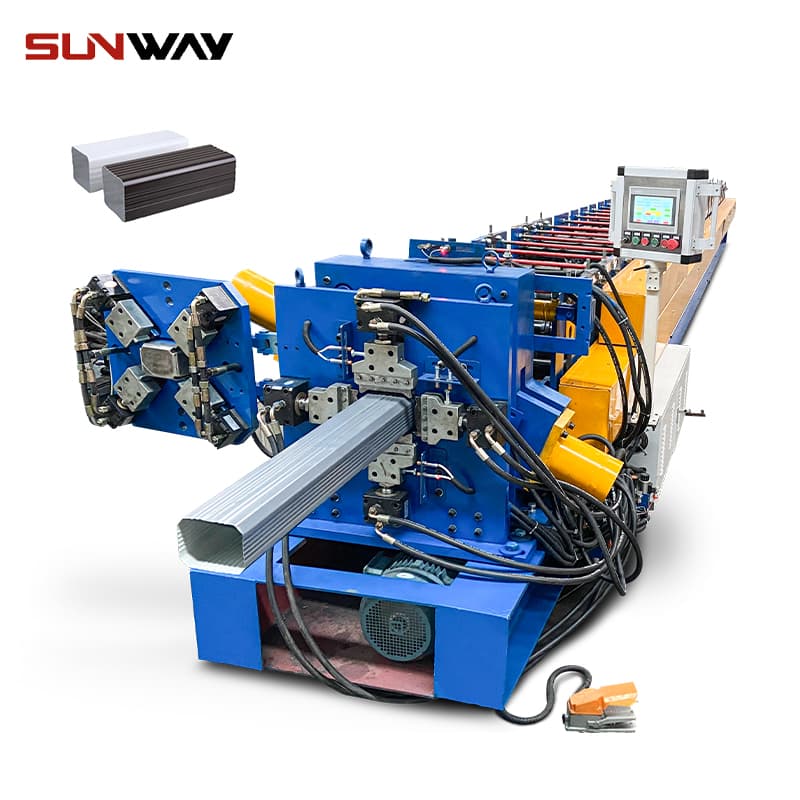
Types of Corrugated Galvanized Steel Roofing
Corrugated galvanized steel roofs come in several types based on their profile shapes, sizes, and uses. Here’s a breakdown of some popular models:
| Steel Roof Type | বর্ণনা |
|---|---|
| Ribbed Corrugated Steel | Features deep ribs that offer maximum strength, ideal for industrial applications and high-load areas. |
| Box Profile Corrugated | This type has square or rectangular corrugations, giving a modern look and excellent strength. |
| Sinusoidal Corrugated | The classic wave-like corrugation, common in agricultural buildings and homes due to its aesthetics. |
| Trapezoidal Corrugated | Trapezoid-shaped profiles provide high tensile strength, often used in industrial roofing. |
| 5V Crimp | A lightweight option with V-shaped ridges, suitable for small residential and agricultural buildings. |
| Standing Seam Metal Roof | A sleek, modern design with interlocking seams, offering excellent water resistance and wind protection. |
| Polycarbonate Corrugated | Lightweight and semi-transparent, great for greenhouses and sheds where light penetration is needed. |
| Aluminum Corrugated Roof | A lighter alternative to steel with superior corrosion resistance, perfect for coastal areas. |
| Zinc Corrugated Roofing | Offers a striking appearance with a self-healing zinc layer that prolongs its life. |
| Stone-Coated Steel Roof | Combines the strength of steel with the aesthetic of traditional shingles, great for residential homes. |
Each of these types has unique advantages depending on your specific needs, whether you’re looking for something modern and sleek or a durable, utilitarian option.
Working Process of Corrugated Galvanized Steel Roofing
How is corrugated galvanized steel roofing made? It’s a fascinating process that begins with raw steel and ends with a protective, durable roofing solution. Let’s walk through the steps involved:
- Steel Production: Raw steel is produced by combining iron with carbon and other elements. This creates a strong base material that can be shaped into sheets.
- Corrugation: The steel sheets are passed through a machine that forms them into the corrugated pattern. This step is crucial as the corrugation provides structural strength without adding extra weight.
- Galvanization: The corrugated sheets are then dipped in molten zinc, coating the steel in a protective layer. This process, known as galvanization, helps the steel resist rust and corrosion, ensuring a longer lifespan.
- Cutting and Shaping: Once the sheets are galvanized, they are cut into specific sizes and shapes depending on the intended use. These can be customized to fit particular roofs.
- Installation: Finally, the corrugated sheets are installed on the roof structure using screws, fasteners, and sealants to ensure a tight, waterproof fit.
This process results in a roofing material that is lightweight yet incredibly durable, perfect for withstanding the elements.
Key Components of Corrugated Galvanized Steel Roofing
When considering a corrugated galvanized steel roof, it’s essential to understand the key components that make up the system and how they contribute to its overall performance.
| Component | Function |
|---|---|
| Steel Sheets | The base material, providing strength and structure. |
| Galvanized Coating | A zinc layer that protects against rust and corrosion. |
| Ridge Cap | Covers the ridge of the roof, preventing water from entering at the top. |
| Screws and Fasteners | Secure the sheets to the roof structure, ensuring stability. |
| Sealant | Provides a waterproof barrier where sheets meet. |
| Underlayment | A secondary waterproof layer beneath the steel sheets for added protection against leaks. |
| Flashing | Installed around roof penetrations (like chimneys or vents) to direct water away from these areas. |
| Drip Edge | Helps direct water off the roof and away from the building’s foundation. |
Each component plays a crucial role in the overall effectiveness of the roofing system, ensuring not just strength but also waterproofing and insulation.
-
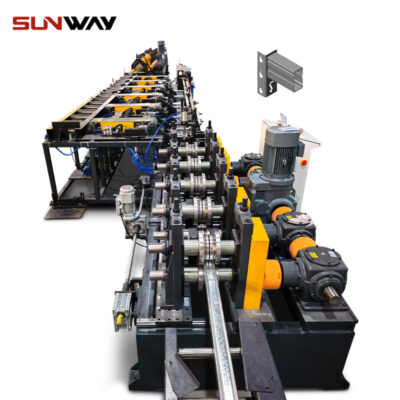 Storage Rack Shelf Box Panel Making Machine Steel Storage Rack System Box Beam Roll Forming Line
Storage Rack Shelf Box Panel Making Machine Steel Storage Rack System Box Beam Roll Forming Line -
 দ্রাক্ষাক্ষেত্র পোস্ট রোল ফর্মিং মেশিন
দ্রাক্ষাক্ষেত্র পোস্ট রোল ফর্মিং মেশিন -
 স্বয়ংক্রিয় আকার পরিবর্তনযোগ্য সিগমা Purlin রোল ফর্মিং মেশিন
স্বয়ংক্রিয় আকার পরিবর্তনযোগ্য সিগমা Purlin রোল ফর্মিং মেশিন -
 স্বয়ংক্রিয় আকার পরিবর্তনযোগ্য CZ Purlin রোল ফর্মিং মেশিন
স্বয়ংক্রিয় আকার পরিবর্তনযোগ্য CZ Purlin রোল ফর্মিং মেশিন -
 স্বয়ংক্রিয় আকার পরিবর্তনযোগ্য Z Purlin রোল তৈরির মেশিন
স্বয়ংক্রিয় আকার পরিবর্তনযোগ্য Z Purlin রোল তৈরির মেশিন -
 অটো সাইজ চেঞ্জেবল সি ইউ পারলিন রোল ফর্মিং মেশিন
অটো সাইজ চেঞ্জেবল সি ইউ পারলিন রোল ফর্মিং মেশিন -
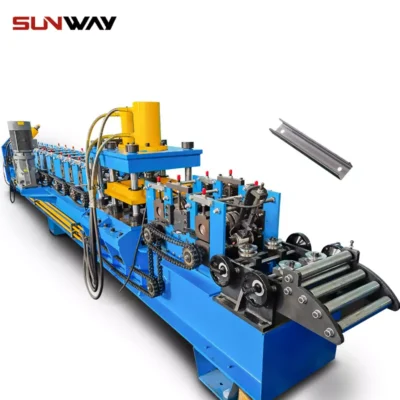 সি সেকশন ব্রেসিং ওমেগা স্টোরেজ র্যাক খাড়া পোস্ট রোল ফর্মিং মেশিন
সি সেকশন ব্রেসিং ওমেগা স্টোরেজ র্যাক খাড়া পোস্ট রোল ফর্মিং মেশিন -
 স্টিল বক্স প্লেট মেকিং রোল ফর্মিং মেশিন
স্টিল বক্স প্লেট মেকিং রোল ফর্মিং মেশিন -
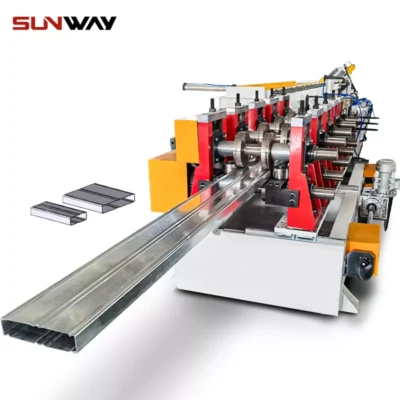 বক্স মরীচি স্টীল রোল শেল্ফ কলাম জন্য মেশিন গঠন
বক্স মরীচি স্টীল রোল শেল্ফ কলাম জন্য মেশিন গঠন
Machine Efficiency and Speed in Corrugated Steel Production
The production of corrugated galvanized steel roofing is not just about the material but also the machinery involved. Efficient machines mean faster production times and higher-quality results. Here’s a breakdown of the machine efficiency and speeds used in production:
| Parameter | বিস্তারিত |
|---|---|
| Roll Forming Machine Speed | Typically 10-20 meters per minute, depending on the material. |
| Shearing Machine Speed | Up to 15 meters per minute. |
| Galvanization Process Speed | Ranges from 5-10 meters per minute. |
| Cutting Tolerance | ±0.5 mm to ensure precise cuts and minimal waste. |
These parameters highlight the high level of precision and speed required in the manufacturing process.
Customized Mechanical Parameters for Corrugated Galvanized Steel Roofing
Depending on the project requirements, corrugated galvanized steel sheets can be customized for different mechanical properties:
| Mechanical Parameter | Range/Description |
|---|---|
| পুরুত্ব | 0.4 mm – 1.2 mm (thicker sheets offer better durability). |
| Width | 600 mm – 1250 mm (depending on project needs). |
| Coating Thickness (Zinc) | 100-275 g/m² (higher coating thicknesses offer better protection). |
| উত্পাদন শক্তি | 240-550 MPa (higher yield strength for industrial applications). |
| Tensile Strength | 300-600 MPa (essential for roofs exposed to heavy loads). |
Customizing these parameters allows the material to meet specific project requirements, whether for industrial, residential, or commercial use.
Applications and Uses of Corrugated Galvanized Steel Roofing
Corrugated galvanized steel roofing is versatile and can be applied in various sectors. Its strength, lightweight nature, and durability make it an excellent choice for many different types of buildings.
| Application Area | বর্ণনা |
|---|---|
| Residential Homes | Popular for modern and traditional homes due to its aesthetic appeal and durability. |
| কৃষি ভবন | Used in barns, storage sheds, and other farm structures for its resistance to rust. |
| Industrial Warehouses | Ideal for large industrial buildings due to its strength and ability to cover large areas. |
| Commercial Structures | Provides a sleek, modern look while being able to withstand harsh weather conditions. |
| Schools and Hospitals | Offers excellent fire resistance and energy efficiency for institutional buildings. |
| Greenhouses | Polycarbonate corrugated sheets are used for light penetration in greenhouse structures. |
| Coastal Buildings | Aluminum or zinc-coated variants are used to withstand corrosive salty air. |
Whether you’re building a barn, a warehouse, or even a home near the coast, corrugated galvanized steel roofs are up to the task.
Installation, Operation, and Maintenance of Corrugated Galvanized Steel Roofing
Proper installation and maintenance are key to ensuring the long life of your corrugated galvanized steel roof. Here’s a guide to help you understand the installation, operation, and maintenance process:
| Aspect | বিস্তারিত |
|---|---|
| Installation | Start by laying the underlayment, then install the sheets starting at the bottom, working upwards. Secure with screws and sealant. |
| পরিচালনা | Once installed, the roof requires minimal attention; it will withstand most weather conditions without issue. |
| Maintenance | Periodic checks for debris and ensuring that screws and fasteners remain tight can prolong the roof’s life. |
| পরিষ্কার করা | Clean with a hose or low-pressure washer. Avoid harsh chemicals that can wear down the galvanized coating. |
| Repair | If a panel becomes damaged, it can be easily replaced by unscrewing the affected area and attaching a new sheet. |
Suppliers and Price Range of Corrugated Galvanized Steel Roofing
Pricing for corrugated galvanized steel roofing varies depending on factors such as the type of steel, thickness, and customization. Here’s a look at some general price ranges from suppliers:
| Supplier | Price Range |
|---|---|
| ABC Metal Roofing | $1.50 – $3.00 per square foot. |
| SteelMax | $2.00 – $4.00 per square foot. |
| Corrugated Roofing Co. | $1.75 – $3.50 per square foot. |
| ZincTech Industries | $3.00 – $5.00 per square foot for zinc-coated options. |
| AluSteel Solutions | $2.50 – $4.50 per square foot for aluminum options. |
Prices may vary based on location, shipping costs, and other factors, but these estimates give a general idea of what to expect when purchasing corrugated galvanized steel roofing.
How to Choose the Right Supplier for Corrugated Galvanized Steel Roofing
When selecting a supplier, consider several factors:
- Reputation: Look for reviews and testimonials from previous customers.
- Pricing: Ensure that the supplier offers competitive pricing without sacrificing quality.
- কাস্টমাইজেশন অপশন: Can they provide tailored solutions for your specific project needs?
- Location: Proximity to the supplier can reduce shipping costs and time.
- After-Sales Service: Do they offer support for installation, maintenance, or repairs?
Taking these aspects into account will help you make an informed decision when choosing your roofing supplier.
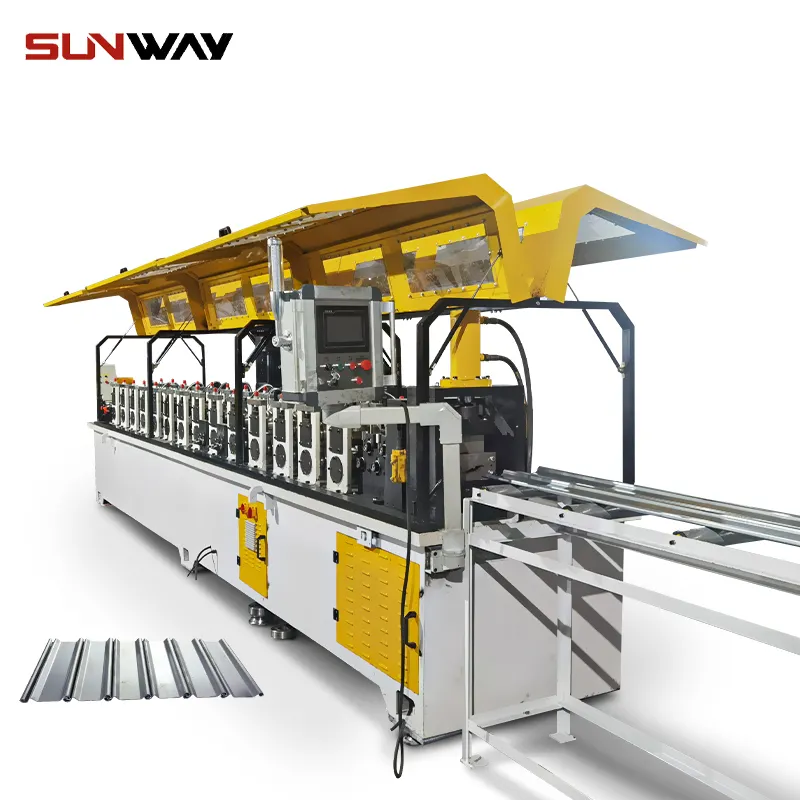
Pros and Cons of Corrugated Galvanized Steel Roofing
Like any roofing material, corrugated galvanized steel has its advantages and disadvantages. Here’s a breakdown to help you weigh your options:
| Advantages | Disadvantages |
|---|---|
| স্থায়িত্ব: Long-lasting with a lifespan of 40-70 years. | Noise: Can be noisy during heavy rain or hail. |
| খরচ-কার্যকর: Affordable compared to other roofing options. | Corrosion: While galvanized, it may still corrode over time, especially in salty environments. |
| Lightweight: Easy to install and doesn’t add much weight to the structure. | Aesthetics: Some find the industrial look less appealing for residential homes. |
| Fire-Resistant: Non-combustible material. | Requires Expertise: Proper installation requires professional skills. |
| Energy-Efficient: Reflects sunlight, keeping buildings cooler. | Expansion and Contraction: Metal roofs can expand and contract with temperature changes, leading to potential wear. |
প্রায়শই জিজ্ঞাসিত প্রশ্ন (এফএকিউ)
| Question | Answer |
|---|---|
| How long does a corrugated galvanized steel roof last? | With proper installation and maintenance, it can last between 40 to 70 years. |
| Is it noisy during rain? | Yes, metal roofs can be noisy, especially during heavy rain, but insulation can help reduce the noise. |
| Does it rust? | The galvanized coating helps prevent rust, but over time, in very harsh environments, some corrosion might occur. |
| Is it energy-efficient? | Yes, the reflective surface helps reduce heat absorption, making it more energy-efficient. |
| Can it be installed over an existing roof? | Yes, in many cases, corrugated galvanized steel roofs can be installed over an existing roof, saving time and cost. |
| How do I maintain my roof? | Regular inspections, clearing debris, and ensuring screws and fasteners are tight will help maintain its performance. |
| What are the common sizes of corrugated sheets? | Standard widths range from 600 mm to 1250 mm, with thicknesses between 0.4 mm and 1.2 mm. |
| Is it suitable for coastal areas? | Yes, especially if you opt for aluminum or higher-grade zinc coatings, which offer better protection against salt corrosion. |
| How much does it cost to install? | Installation costs range from $5 to $12 per square foot, depending on factors like complexity and location. |
| Is it environmentally friendly? | Metal roofing is fully recyclable, making it an eco-friendly option compared to traditional materials like asphalt shingles. |
